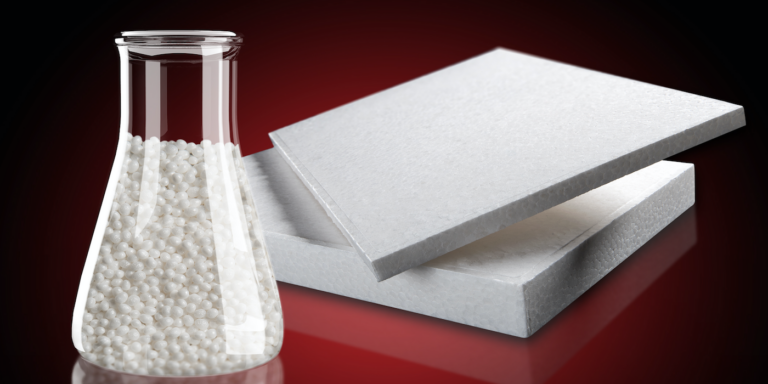Following a two-year research period, BASF has unveiled a prototype of what it claims to be the world’s first particle foam based on polyethersulfone (PESU). According to the company, the foam offers a combination of high temperature resistance, flame retardancy, “extreme” light weight, stiffness and strength. These properties mean the foam is suited to – and indeed approved for – complex-shaped components in aircraft, which require excellent mechanical properties together with the ability to withstand high operating temperatures and to meet stringent flame-retardancy requirements.
Named Ultrason E, the expandable PESU granulate is pre-foamed into beads with low densities between 40 and 120g/L and can be processed into molded parts with complex 3D geometries using technologies already available on the market.
Ultrason E is an amorphous thermoplastic with a glass transition temperature of 225°C, which BASF claims will remain dimensionally stable up to this temperature. The material’s mechanical and dielectric properties are only “slightly dependent” on the temperature, and its limiting oxygen index of 38 (according to ASTM D 2863) meets the requirements for commercial aircraft with regard to combustibility, low heat release and low smoke density (‘fire, smoke, toxicity’) even without the addition of flame retardants, which means it is intrinsically flame retardant.
Particle foam for new lightweight components
The density, stiffness and strength of the foam is claimed to enable components to be manufactured with excellent dimensional stability at high temperatures. Expanded molded parts made from one single material offer advantages compared to honeycomb structures coated with phenolic resins, offering flexibility in terms of densities and shapes, and therefore greater freedom in design, according to the company.
Other benefits compared with honeycomb structures, according to BASF, include having fewer processing steps and therefore lower system costs. Functional parts such as inserts and screw threads can be integrated in the complex geometries, and because the polymer is of a single origin, recycling of the parts is simple.





